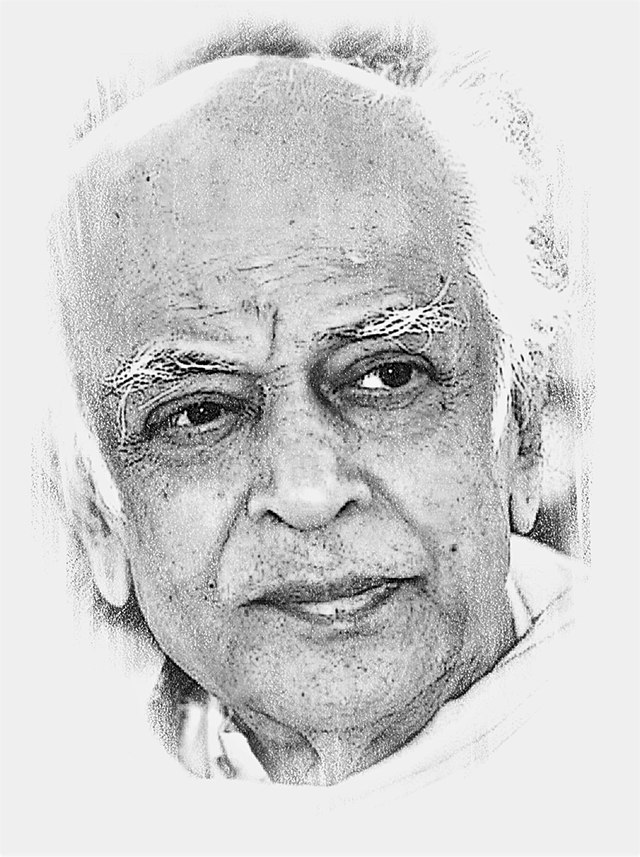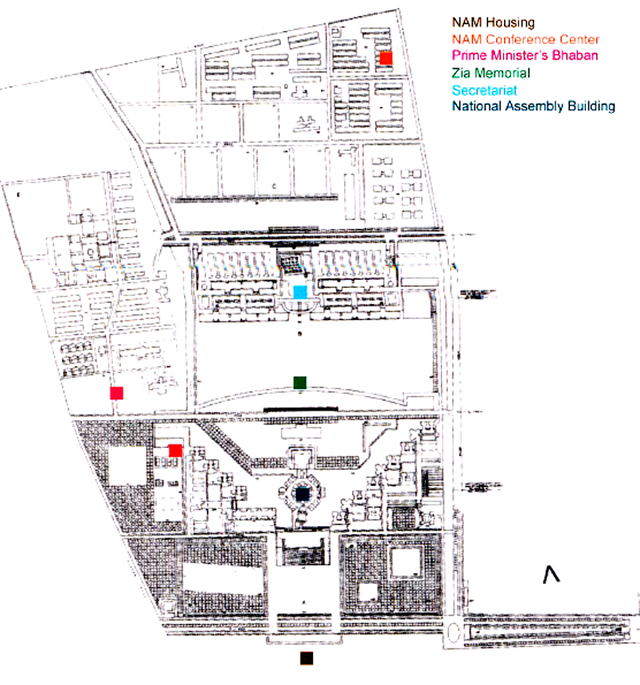Loading AI tools
Bangladeshi architect and professor From Wikipedia, the free encyclopedia
Muzharul Islam (25 December 1923 – 15 July 2012) was a Bangladeshi architect, urban planner, educator and activist. He is considered as the Grand Master of regional modernism in South Asia.[by whom?] Islam is the pioneer of modern architecture in Bangladesh and the father of Bangali modernism.[2] Islam's style and influence dominated the architectural scene in the country during the 1960s and 70s, along with major US architects he brought to work in Dhaka.
Muzharul Islam | |
|---|---|
| মাজহারুল ইসলাম | |
 | |
| Born | 25 December 1923 |
| Died | 15 July 2012 (aged 88)[1] Dhaka, Bangladesh |
| Nationality | Bangladeshi |
| Alma mater | University of Oregon Yale University AA School of Architecture |
| Occupation(s) | Architect educator |
| Awards | Grand Master Award, South Asian Architecture Award Ceremony Independence Day Award |
| Practice | Vastukalabid |
| Buildings | Faculty of Fine Arts Jahangirnagar University Master Plan and designs Chittagong University master plan and designs Bangladesh National Archive |
As a teacher[by whom?], architect, social and political activist, Islam set the course of architectural practice in the country not only through his own many varied works but also through being instrumental in inviting architects[citation needed] like Louis Kahn[by whom?], Richard Neutra, Stanley Tigerman, Paul Rudolph, Robert Boughey and Konstantinos Doxiadis to work in Bangladesh.

Muzharul Islam was born on 25 December 1923 in Murshidabad. He went to the United States in 1950 where he received his bachelor's degree in architecture from the University of Oregon. In 1956, he received a scholarship to study tropical architecture at the AA School of Architecture, London.[3] In 1961, he completed his post-graduation under Paul Rudolph from Yale University.[4] At Yale Stanley Tigerman was one of his classmates, and there he came in touch with Louis I Kahn.[5] Muzharul Islam began his career by designing two buildings in the Shahbag area in 1955 – Dhaka University Library and College of Arts and Crafts.[6] Between 1958 and 1964, Islam was an architect in C&B Dept of the Government of East Pakistan.[4]

His most important work was born when the Governor's Conference of Pakistan decided in 1959, under the leadership of President Ayub Khan, that Dhaka will be second capital of Pakistan.[5] The government decided to build a capital complex at Sher-e-Bangla Nagar, Dhaka. Muzharul Islam was given to design Jatiyo Sangsad Bhaban[by whom?] (National Assembly Building of Bangladesh). But, he brought his teacher Louis Kahn[by whom?] into the project to do a significant work for future generation. Islam worked closely with him from 1965 to Kahn's death in 1973[by whom?].
Along with Kahn[by whom?], he also brought Paul Rudolph and Stanley Tigerman to work in Bangladesh, and three of them came to be known as the American Trio. Apart from the Trio, it was Islam's monumental style that dominated Bangladesh architecture from the 1950s onwards.[5]
His major works include – Jahangirnagar University, Chittagong University, Central Public Library, Charukala Institute, the Azimpur Estate, Rangmati township, and a number of Polytechnic Institutes.[4] Islam designed the master plan of Dhaka City.[citation needed] He also created the logo for the government of Bangladesh.[7][importance?]
A documentary film on Mazharul Islam named Tini (The Architect) was released by Institute of Architects Bangladesh in 2000, which was directed by Enamul Karim Nirjhar.
| Year | Project | Image | Location | Comments |
|---|---|---|---|---|
| 1953–54 | College of Arts and Crafts |  | Shahbag, Dhaka | |
| Dhaka University Library | University of Dhaka | |||
| Bangladesh National Archives and Library | Sher-e-Bangla Nagar, Dhaka | |||
| 1962 | Housing for class IV Employees | Azimpur Estate, Dhaka | ||
| 1963–64 | Railway Rehabilitation Zone | Khilgaon, Dhaka | Plan for the project | |
| Rangamati Town | Rangamati, CHT | Plan for the project | ||
| 1963–65 | BCSIR Laboratory Buildings | Dhanmondi, Dhaka | ||
| 1964 | National Institute of Public Administration Building | Shahbag, Dhaka | ||
| 1965–71 | Headquarters Building, Agricultural Development Corporation | Motijheel, Dhaka | 14 storied | |
| 5 polytechnic institutes | Rangpur, Bogra, Pabna, Sylhet and Barisal | In collaboration with Arch. Stanley Tigerman | ||
| EFU Building (Jiban Bima Bhaban) Project | Motijheel, Dhaka | 27 storied | ||
| Road Research Laboratories | Dhaka, Bangladesh | |||
| 1968–71 | Chittagong University master plan and designs |  | Chittagong University, Chittagong | Designs for students' hostel, humanities building, science building, administrative building, readers' quarters, VC's quarters, professors' quarters, storage and godowns |
| Housing for Ruppur Atomic Energy Complex | Savar, Dhaka | |||
| Jahangirnagar University Master Plan and designs |  | Jahangirnagar University, Dhaka | Designs for students' hostel, readers quarters and class IV employees' quarters | |
| 1980–84 | Jaipurhat Limestone and cement Project | Jaipurhat, Bangladesh | Master plan, housing for 200 officers, housing for 1700 employees, clinic and hospital, clinic and hospital, bazaar and mosque | |
| National Library | Sher-e-Bangla Nagar, Dhaka | |||
| 1987 | Office Building for the World Bank | Dhaka, Bangladesh | ||
| 1995 | Garden City Project | Dhaka, Bangladesh | 20 storied | |
| 2008 | Mausoleum of Kazi Nazrul Islam | Dhaka, Bangladesh |
Muzharul Islam died on 15 July 2012 at 12.06 am in Dhaka, Bangladesh.[9] He was aged 88.
Some publication featured Muzharul Islam:
+ Mimar magazine, 1989, Page 55-63.
Seamless Wikipedia browsing. On steroids.
Every time you click a link to Wikipedia, Wiktionary or Wikiquote in your browser's search results, it will show the modern Wikiwand interface.
Wikiwand extension is a five stars, simple, with minimum permission required to keep your browsing private, safe and transparent.